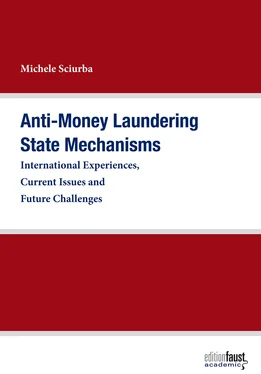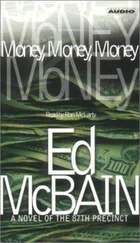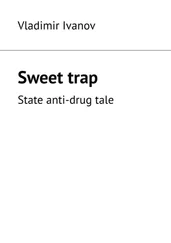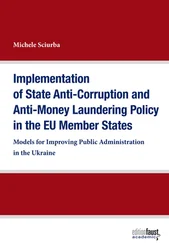I.2 The Bank Secrecy Act 1970: A Model for Modern AML Regimes
In 1970, the US adopted the BSA which, for the first time, required financial institutions to report deposits, withdrawals, exchanges of currency, or transfers exceeding USD 10,000. In order to meet the BSA’s requirements, the financial institutions had to install corresponding internal controlling and monitoring systems. Compliance officers now monitored the daily activities and trained the bank personnel to meet the new demands under the BSA. 15In addition, the Money Laundering Control Act 16of 1986 defined ML as a serious crime punishable with a fine of up to USD 500,000 or up to 20 years of imprisonment. 17In the late 1980s, the UN and EU added the issue of global cross-border activities of organised crime to their agenda. 18
One of the BSA’s main tasks is to impede money laundering while helping US banks to be less vulnerable to ML activities. In order to integrate AML programs into financial institutions, designed to uncover and stop financial crimes, the BSA has authorised the Secretary of the U.S. Department of the Treasury to adopt regulations appropriate for the implementation of the Act and require implementation from banks and financial institutions. 19Organised crime responded to the new measures under the BSA by dividing transfers of “dirty” money into amounts below USD 10,000 to avoid potential monitoring. In response to this behaviour, the supervisory authorities tightened the reporting requirements for suspicious transactions to amounts exceeding USD 5,000. 20The BSA regime placed different requirements on individual financial institutions and intermediaries. Western Union, for example, has to report transactions exceeding USD 3,000. All things considered, the BSA represents a starting point in two respects. First, it marks the beginning of modern AML legislation for combating organised crime. Notably, similar AML legislation has been implemented globally based on the BSA model. Second, the BSA began a creeping erosion of banking secrecy, abandoning the protection of bank customer privacy. In the entire Western world today, virtually any bank customer can become the subject of a money laundering investigation without reasonable suspicion or grounds. 21
I.3 The Current AML Regime in the US
The establishment of the BSA in 1970 marks the beginning of AML legislation in the US and has been an integral part of the fight against money laundering and organised crime, especially in relation to drug trafficking. Subsequently, the Money Laundering Control Act created the legal basis for severe penalties for money laundering offences in the 1980s 22and the 1990s 23. 24The founding of the Financial Crimes Enforcement Network (FinCEN) in 1990 put a strong emphasis on cross-border tax evasion under the BSA. 25Yet, after 9/11, the fight against terrorist financing became a central part of AML legislation in the US. For this reason, the USA Patriot Act 2001 26contains several AML provisions 27, despite the focus of the Act on the fight against international terrorism. This includes the obligation of financial institutions to establish AML programs in section 352. 28In 2003, the U.S. Treasury delegated the administration and enforcement of the BSA’s provisions to the Director of the FinCEN based on the Treasury Order 180-01 29in the course of the inclusion of CTF into AML objectives. Today, the board of directors of individual financial institutions is in charge of maintaining an effective AML control structure in line with BSA requirements for the monitoring and reporting of suspicious activities. The internal control mechanisms must carry out risk assessments to monitor specific risk areas vulnerable to money laundering and terrorist financing. Thereby, all Know-Your-Customer (KYC) and customer due diligence requirements must meet the requirements of the AML rules under the BSA. 30
The US has taken a pioneering role in the fight against organised crime and tax evasion by creating international collaborations that have led to the adoption of UN Treaties, recommendations of the Council of the Organisation for Economic Co-operation and Development (OECD) and the founding of the FATF. After 9/11 painfully demonstrated the vulnerability of the Western world to terrorist attacks, all OECD countries responded with a massive expansion of governmental powers in order to fight against money laundering and terrorism financing, such as those in the Patriot Act 2001 in the US. To that end, the USA Patriot Act, the FinCEN and the Office of Foreign Assets Control (OFAC) established a new AML/CTF security architecture that makes extensive monitoring, reporting and controlling in financial institutions its highest priority. Moreover, this new system has considerably broadened the definition of “company activities” as compared to the activities that were previously subject to the provisions of the BSA. 31A similar expansion took place in the EU with the implementation of the Fourth Anti-Money Laundering Directive (4th AMLD) 32, and in the FATF member states with the implementation of the FATF 40 33+ 9 34Recommendations, respectively. Under the banner of waging a “war on terror”, bank secrecy was de facto abolished. Noticeably, the Patriot Act suspends the presumption of innocence and disregards the right to a fair trial and, thus, is largely incompatible with human rights law and international law. Although the USA Freedom Act 2015 35has replaced large parts of the Patriot Act in the meantime, little has changed regarding this substantive incompatibility.
Over the last 20 years, technical developments have contributed to the globalisation at an ever-accelerating pace in all areas of communication, capital flows and international trade in goods. Organised crime does not stop at national borders but rather adapts itself to new regulatory developments. 36By the time of the establishment of the FATF, the First European Anti-Money Laundering Directive (1st AMLD) 37, and the adoption of the UN Convention against Illicit Traffic in Narcotic Drugs and Psychotropic Substances 1988, the fight against ML and financial crimes had become a central matter for international cooperation. After 9/11, the urgent question of how to detect and prevent terrorist financing was coupled with the question of how to prevent ML, as the shock waves of the attacks significantly shook the Western world. President Bush issued a series of executive orders aimed at destroying the basis for funding terrorist organisations and terrorists. The Bush administration created new investigative bodies, such as the Policy Coordinating Committee on Terrorist Financing, 38to coordinate measures against terrorist financing in the US. 39Finally, the USA Patriot Act was adopted at an unprecedented speed in order to provide an effective tool against international terrorism and terrorist financing.
The Act declared several business and financial transactions illegal, greatly expanded existing law enforcement powers and forced financial institutions to establish new customer due diligence measures. At the same time, the Act has considerably weakened privacy and confidentiality laws, providing for severe penalties in case of non-compliance by financial institutions. 40In Title III, the Act contains various provisions that greatly expand the AML and CTF regime. In section 311, the Patriot Act extends the scope of the BSA by adding section 5318A U.S. Code (USC) 41. 42The Secretary of the Treasury now has the authority to impose measures in the AML and CTF context that have extraterritorial effect. 43
I.4.1 The USA Patriot Act’s Effect on Financial Institutions
Section 311 of the Patriot Act has added section 5318A USC to the BSA, expanding it to include five measures with extraterritorial effect that, in case of money laundering, empower the US authorities to oblige foreign jurisdictions, institutions or financial institutions to provide: (1) additional records or reports of specific financial transactions; (2) the identities of foreign beneficial owners of certain bank accounts; (3) the identities of customers of a foreign bank conducting interbank transactions via “payable through” accounts; and (4) the identities of foreign bank customers who use correspondence accounts in interbank transactions. In addition, the US authorities may restrict or prohibit the establishment or maintenance of certain interbank correspondent or “payable through” accounts. 44Section 313 of the Patriot Act has implemented the subsection (j) in the USC Title 31 §5318 45, prohibiting US financial institutions, security brokers, and dealers from opening or managing correspondence accounts of foreign shell banks. This measure closed another gap to prevent potential terrorist financing. Accordingly, the shell company Bank al-Taqwa based in the Bahamas was identified as financing terrorism in November 2001. 46The Patriot Act now provides a comprehensive list of potential terrorist financiers who are denied access to the US financial market. 47
Читать дальше












